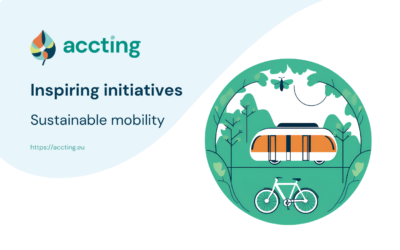
Costa da Caparica (Portugal), 2023. Photo by Patricia Abrantes
According to UN-Habitat, in 2020 56% of the world’s population lived in cities. It is estimated that by 2050 this will rise to 68%.1 Rapid urbanisation is one of the greatest challenges affecting global development efforts toward sustainable development goals. Such goals include agri-food systems that are locally available, healthy, safe, as well as physically and economic accessible to all urban dwellers with the least environmental impact.
However:
– Urbanisation is reducing the amount of land available for food production. As cities expand, they often encroach on agricultural land. 13.200 km2 of agricultural areas were transformed into urban areas between 2000 and 2018 – meaning 78% of the newly urbanised land in Europe directly affected agricultural areas2. Thus, the agri-food system becomes more dependent on global markets, and urban populations become particularly vulnerable to international fluctuations of food prices due, for instance, to crop failures and food shortages under climate change, financial and/or political instability. An example is Russia’s invasion of Ukraine, which disrupted the cereal market, leading to the rise of prices and increasing inflation.
– Urbanisation is shifting dietary habits. Together with income and population growth, urbanisation is increasing the demand for meat, dairy, processed and convenience food produced worldwide and with a large footprint. Malnutrition in all its forms (ex. diabetes, obesity, undernutrition) become highly prevalent among urban dwellers3.
– Urbanisation is also producing inequalities in accessing food. Vulnerable populations such as low-income households, minorities, migrants, and those living in marginalised communities have less access to affordable and nutritious food (especially fresh fruits and vegetables). This results in food insecurity among these populations4.
In order to achieve sustainable food systems in an urbanised world, land use planners and policy-makers need to take into account the relation between urban and agricultural systems (i.e., agri-urban systems) within cities and their surrounding areas. This should be achieved through a holistic approach – encompassing environmental, economic, social cohesion and governance within the food production, distribution, consumption, and waste management.
1. Environment
Land (soil) and water are scarce natural resources which must be protected. For instance, land contributes to a series of ecosystem services, including food production. Land use planning must integrate agriculture into urban landscapes. Suitable sites can be designated for agriculture, and green spaces can be incorporated into urban development projects. Here, urban agriculture can be promoted through urban farms, community gardens, vertical gardens, or indoor farms. Municipalities can provide incentives and technical guidance.
2. Economics
Local food production around the city must be supported. Direct sales between farmers and consumers can help promote local economies and job creation, particularly around innovative forms of commerce (ex. mobile markets), technology, circular (ex. food waste and composting, food waste, bio-energy and/ or water reuse) and social economy (food programs, food banks).
3. Socio-territorial equity
Sustainable agri-urban systems must be designed to guarantee social equity and cohesion which means ensuring that all members of the community have access to healthy and accessible food. This can be done by providing incentives for local food production and ensuring that affordable, healthy food options are available in low-income neighbourhoods.
4. Governance and behavioural change
Sustainable food production and consumption can only be achieved through behavioural change – encouraging sustainable food choices that must be implemented through food literacy. Articulation between zoning and strategic planning, coordination between public sectoral and planning policies, and partnerships between non-governmental, private and public entities in education (schools), food outreach programs, and community events are essential to build community engagement and consensus around food.
1 UN-Habitat. (2020) World cities report. The value of sustainable urbanization. Nairobi. UN-Habitat.
2 EEA (2019). The European environment — state and outlook 2020 Knowledge for transition to a sustainable Europe.
3 Willett, W., Rockström, J., Loken, B., Springmann, M., Lang, T., Vermeulen, S., … & Murray, C. J. (2019). Food in the Anthropocene: the EAT–Lancet Commission on healthy diets from sustainable food systems. The lancet, 393(10170), 447-492.
4 WFP, W., & UNICEF. (2022). The state of food security and nutrition in the world 2022.
About the author

Patrícia Abrantes is Assistant Professor at the Institute of Geography and Spatial Planning, Universidade de Lisboa, where she lectures spatial analysis, GIS, statistics and spatial planning. She is also a researcher at the Centre of Geographic Studies at the same university. She has developed several research projects related with agri-urban systems, including DAUME (Sustainability of urban agricultures in the Mediterranean area) and AgriMet-MOD (Metropolitan Agriculture spatial Modelling). Her research interests include land use and urban agriculture, agriculture ecosystem services, spatial analysis, geographic information systems (GIS) and participatory GIS.


